Why You DON'T Pull the Butt of the Club Toward the Ball
Have you ever heard you should pull the butt of the club toward the golf ball in the downswing? In this lesson, you'll learn why that advice can leave you wanting to quit the game!
Speaker 1:
So what'
s going on, man?
How can I help you?
I'
m ready to quit the game really miserable.
I mean, seriously miserable, you know, sorta all over the place, you know, I can do it in slow motion.
And then when I bring it into real time, terrible things go wrong.
And what I noticed it for me, I know I'
m not moving the legs.
Great.
And so not really posting up.
And if I do try to post up it winds up almost being a flip where I'
m tying to what you'
re almost trying to time the post up with impact.
And I know I'
m supposed to post up and still be before impact, but that'
s not what happens.
And what I'
ve noticed is club is getting completely out of control in the backswing, especially with the driver.
And when I look at it half the time I'
m like down here somewhere instead of up there.
Speaker 1:
So for around, I started doing your, you know, the elevation right rotation and flection type thing, seeing where it should be coming over here and rather than try and move the body to get the club there, cause that wasn'
t working.
I was basically just lifting it up, right.
Definitely much better impact.
You know, it was killing my three-word.
I can hit it to 60 to 70 like that, but sometimes it would get a little crazy, the better I hit it I'
d noticed the less I was moving.
It was just literally just kind of pulling this back, getting this up here and letting it fire.
I know that'
s not the right way to swing, but I can'
t seem to do it.
And I feel like I'
m getting maybe too wide in the back swing and that'
s where I'
m losing it, but I don'
t know.
Speaker 2:
Okay.
So what you'
re describing is very common that people kind of go through these things, trying to find a way to just to put the bat on the ball, right?
And so a hundred percent true if you just stop moving everything and you just make the swing as small and simple as possible, then certainly you'
re going to have better chances of success of making contact.
And if you'
re strong enough and fit enough, which obviously it looks like you are, you can make a really short, compact swing and still get a lot of speed out of it.
Now, the trick is, as you found to do that with a shorter compact swing where you'
re not really turning very much and you just kind of, you know, creating some leverage pretty early in the swing with your arms, as you, you found, you have to re accelerate the hard you got to get that club going pretty quick.
Speaker 2:
Cause you don'
t have a lot of time to accelerate it, right?
If you'
re swinging only to here, that'
s why you feel like you'
re chasing the club around, right.
Cause you got to get it going fast.
And so your swing will start to kind of feel a little out of at times where you feel like you'
re chasing the club head because you'
re just having to Huck it so hard from the top so soon.
And so that'
s problem.
Number one, when you, when you'
re doing that, the swing feels fast and it feels a little out of control, but you know that sometimes you can put the bat on the ball because at least your swing is fewer moving parts, right?
That that'
s part of the key.
But then as you get older too, and you lose some strength and flexibility, which we'
re all going to do, right?
Speaker 2:
And we start finding, you know, we'
ve got a little more aches and pains and things like that.
You'
ll find that you'
ll, you'
ll hit a space where your distance will drop off precipitously.
And I'
ve seen it literally thousands and thousands of times where people can kind of get away with stuff when they'
re super young and fit and strong.
And then, and they don'
t have as many aches and pains and don'
t, they only need one out of bill instead of five before round a golf.
And then as you get older, you start realizing, gosh, I can'
t get away with that stuff I did before.
So what I would like to, and what you'
re also describing, you feel you'
re too wide.
Typically that means you'
re too deep or disconnected.
There'
s no such thing really per se, as being too wide, as long as you'
re not doing in a way that'
s like goofy, like where you'
re really extending your arms or something like that.
Speaker 2:
But the reality is with this super important in the swing, because it not only buys you the time to get everything in your body to move correctly in the right sequence.
But it also is free speed, the wider, the swing arc that you create, the faster that club moves, right?
So when you start going to being really short, compact, and powerful versus wide and using a lot of, you know, a lot of muscles to do things versus relying on just your arms and hands, the swing will feel different for sure.
But the trick is that'
s where efficiency really comes in, is learning how to move your body.
Not trying to move the arms, to create with not trying to make the club be wide, but literally width is actually just a matter of not doing hardly anything with your arms at all.
That'
s the truth of it.
Most people think of trying to create this big wide swing and they start moving their head off the ball or trying to extend their arms and then their arms are disconnected from their rib cage.
And so now, yeah, like I'
m really wide, but this feels terrible.
The reality is if I'
m going to be really wide, I'
m just not going to move my arms at all.
And that'
s a very wide takeaway, but all I did, literally, if I go back to address, it'
s almost exactly where it was,
Speaker 1:
Right?
So when you,
Speaker 2:
What you described making these shorter swings and what you showed me was kind of not really turning and just loading up your arms and your hands are pretty low.
So you lose a lot of leverage, right?
That'
s a really narrow swing.
And so then when you make a narrow swing, you need a lot of muscular force from your arms to try and make up for that lack of width in your swing.
But at the end of the day, students always want to win.
And that wider swing is always going to be more efficient for speed and power.
So,
Speaker 1:
And I believe that, yeah, go ahead.
Yeah.
And you know, I'
ve all of that has made a lot of sense to me and I, you put out a video not too long ago, maybe in the last week it was one of your in-person lessons.
And you know, I watch all your videos and try to apply them.
But you said a long don'
t do that because you don'
t know what you need.
Right.
Right.
But this one made a lot of sense to me because I always feel like this gets bunched up.
And with that gentleman, you had him feeling like this arm was staying straight.
So I did that.
And I I'
ll tell you Chuck for, you know, maybe a half dozen holes, it was a very, I felt like very slow, very wide, like kind of like more like this.
And then back down to the ball.
Nice and easy.
And I hit a great, but it went away.
It went away in a big way.
And all of a sudden, like I'
m back where I started, like somewhere between here and here, I lose it.
And I, I don'
t, I don'
t know which muscles should be firing.
I don'
t know what I should feel.
I feel like the hips are moving too much.
Speaker 1:
We'
re going to save you.
I promise.
Okay.
Speaker 2:
Until the stuff that you need to work on, it may be a process.
It typically is.
And maybe a few things.
But the reality is that the golf swing in general is really not that complicated, but it'
s so easy for us to get lost when we'
re trying to feel something or chase something like a concept.
Like in that case, I remember the lesson of talking.
I told the guy like, you know, pretend that you never ever bend your right arm all the time.
But I, but I also said, but don'
t be stiff with it.
Right.
That'
s the key.
Right.
So it'
s just not moving the arms.
And when you learn that and you start realizing that you'
re, you can load up the body first, then the swing becomes really, really simple.
But if you'
re chasing the arms at all, it is a puppy dog chasing his tail in a circle.
I mean, you'
ll never ever get to the goods because it'
s so easy to be so inconsistent because just this alone, that'
s moving the club two feet
Speaker 1:
Out here.
Right.
Right.
Right.
So just the tiniest
Speaker 2:
Bit of overactivation and not understanding how to move, how to move the arms with the body leads to what you found.
Right?
Like at first I had a feeling, I had a concept and it worked and then you don'
t realize it.
But then as you start changing something in your swing, next thing you know, the club'
s all out of position again.
So, so the, the real goal is just to simplify everything in the swing, which is what we'
re trying to do.
But for you specifically, it'
s going to be something pretty simple because I, I can see even what you'
re demonstrating there.
When you, when you sit, I'
m going to show, you know, the right arm, staying straight, you started then doing this and your left arm, the right elbow got stuck.
And the left arm, elevating and rotating, that would lead to a really flat swing.
Speaker 1:
Yes, yes.
Right.
And it feels it, especially with the driver.
When I, you know, when I get back here, I have no clue where the club faces no clue.
It feels like it'
s gone all the way behind me pointing back towards that.
Right.
This
Speaker 2:
Is what'
s cool about this is all arms.
All of the stuff you'
re describing is incorrect or overuse of the arms and that'
s it.
Okay.
And so when you start realizing that that'
s the whole culprit and the body is going to learn to do what it needs to do in the arms, you'
re just going to do way, way, way less than the swing is going to feel simple and under control and that'
s, but it is hard at first because we do everything in a daily life with our arms and hands.
Right.
And they can move all over the place in the swing.
And really the arms, the whole swing is literally just that, like, that'
s all the arms do.
And if you'
re doing any more than that, you'
re going to struggle right.
Speaker 1:
In trouble.
Okay.
We go for, we do the, the exercise, just one other thing.
So in, in some of the videos that you had, you talk about the, the proper setup, right.
And that being the shoulder blades kind of in and down, right.
More like this, and the problem is right, because I guess a fairly large lats, I used to lift weights when I was younger.
And so that'
s not happening.
Right.
If I'
m in a down I'
m crushing my chest to get there.
Yeah.
So what do I do?
Yeah.
Speaker 2:
A great question.
Your shoulder blades have to protract or move forward a little bit.
And that part of that will be dependent on your build.
Right?
So if you'
re a bigger guy with a bigger chest, you'
re going to have to let your arms come forward a little and bigger chest is the more that'
s going to have to happen.
Otherwise you physically won'
t be able to reach the club where you'
ll be so tight.
You won'
t want to move.
Right.
Right.
Yeah.
So, so shoulder blades back is just relaxed and neutral.
It'
s not like we'
re trying to do a cable row.
Right.
They'
re just, they'
re just neutral.
And then as you hinge forward, you'
re going to have to let the right shoulder, the left arm is going to stay relatively back, but it can come forward a little as well.
But then as you add tilt and the right shoulder can protract a little bit to get your hand on the club, you should feel a lot more relaxed.
Speaker 1:
Yes.
Okay.
Yeah.
Okay.
That'
s pretty good there.
Okay.
So let'
s, let'
s go
Speaker 2:
Ahead and make a couple of swings face on and down the line.
I'
m going to record them and then we'
re going to see what'
s going.
I don'
t want you to think about anything I want you to do.
What feels totally natural for you right now?
Yep.
Will do.
Okay, perfect.
Let'
s go ahead and go down the line.
Yep.
All right.
No problem.
I see exactly what'
s going on and it'
s, it'
s not as desperate as you feel.
Speaker 1:
Well, if you saw my scores, you would feel very desperate.
Speaker 2:
I totally understand.
But it'
s all basic stuff.
It really is.
Okay.
All right.
So you see the screen.
Okay.
There.
Yeah.
I can see it.
Fine.
Okay.
Little tiny adjustments.
I'
d I'
d want to make it set up, but I'
m not going to get too hung up on setup stuff right now.
Just because I want to get big picture stuff.
You do need a little bit more access to your hips are a little bit underneath your body.
You need this, let the hips shift just a hair forward.
Like three quarters of an inch to the left would be plenty.
And we'
d be perfect there, but we'
re not going to get too caught up on anything else there, because we have some big picture stuff we need to tackle.
So as you'
re going back, so right there, it should be about the end of the takeaway.
Speaker 2:
That'
s right there.
Okay.
Do you see your right arm is kind of buried?
I can'
t really see.
Yep.
Okay.
So when we look at this from down the line, it'
ll start to make more sense, but ideally we would see a little gap.
We'
d be able to see daylight between those forms.
Now, why does that matter?
Because it'
s understanding how your arms are moving in sync with your body.
So I'
ll look at this more when we go down the line, but this is just one little indicator.
When we'
re starting to see a lot of left arm role, that the right arm will disappear very early and you can see there.
It'
s completely gone.
Yeah, that'
s right.
So now we'
re swinging that left arm across the body.
Quite a bit.
You make a good turn, but now we'
ve got the lower body is a little out of whack here.
Speaker 2:
Yup.
This you'
ve overturned your hips.
Yes.
Okay.
And so now from here, the golf swing is incredibly complex, right?
Yeah.
To get everything, to work back together, when we'
ve made a big hip turn and push that left arm across our body and deep and shallow, honestly, there'
s no way to play really consistent golf unless you just pounded a thousand balls a day until you just groove some timing.
But we don'
t, we don'
t have time for that.
And we don'
t need that.
So we'
re going to simplify what'
s going on in your lower body, this hip turn being too much like this is part of the issue that allows the arms to get even deeper.
And then as you start down, you actually do a pretty good job making a transition coming down, but the arms start to fire and we need, you actually did a good job posting up, especially given where you were, but your swing is really not that bad.
You'
re overdoing kind of keeping this heel down at this point, the heel needs to come up and release.
And so you'
re kind of getting a little too mechanical with certain things and not letting things happen naturally.
And this is, this also leads to frustration and confusion because you'
re like, well, wait a second.
I'
m at my footsteps now, why am I doing this?
Or why am I doing that?
But let'
s quickly take a quick look down the line and we'
ll see you that left arm stuff, starting to pop up here as well.
Speaker 2:
So there the left.
So the logo on your shirt would be completely disappeared at this point.
This is just a little bit of a left arm swing, but again, not nearly as bad as you think, a little loose at the top.
And then the arms fire.
This is very, this is why your scores don'
t reflect where you should be.
This shaft is very steep.
Keep at this point, it'
s going to come down a little bit over the top.
I should quite a bit over the top right there.
Yep.
And then yeah, pretty jammed up at impact and then released.
So this swing is not nearly as bad as you think it is.
Speaker 1:
Okay.
It sounds really bad as you describe it, but sure.
I understand.
Speaker 2:
It'
s going to sound bad at first, but really what you have is some very basic stuff.
If you, if you forgot everything in the golf swing in general for a second, and you just thought about what'
s going on with the club, the club is coming down a little bit over the, quite a bit over the top and steep.
Okay.
So when you have a steep swing, you need something to shallow that out.
So that'
s what you need to start with.
What are things that you'
re doing that are causing you to get steep?
Typically when you'
re steep, it'
s because the shoulders are turning or the arms are fire and too soon from the top.
And when you do that, the reason is the important thing.
And that'
s what I want to understand.
If you start swinging steep and over the top in your firing your arms, it'
s because your body doesn'
t feel like it'
s giving you the power that it needs, right?
Speaker 2:
So your arms subconsciously your arms will be like, well, I don'
t feel like I have any power.
So I have to do something.
Otherwise this ball is going to be a powder puff.
It'
s not going to go anywhere.
And so you can'
t override your subconscious.
So you keep firing your arms.
You keep firing arms.
You keeps going over the top.
So what I want to do is get you not big mechanical stuff.
What I want to do at first is get you a power source to replace the arms so that what you start feeling is your body working differently in the swing.
And it will shallow out the swing plane automatically for us.
It'
ll get us into better positions and it'
ll get you to start focusing on how to use your body correctly.
Then we can start worrying about the details is what your arms are doing and stuff.
Speaker 2:
Cause they'
re doing more than they need to, for sure.
But I don'
t want to get you caught up in a bunch of like technical stuff with the backswing.
I want you to feel what it feels like to use your body powerfully.
So stand up for me and I want you to start to feel this.
And we'
re going to focus on using the left side of our body, both our left hip and our left oblique, even your latch, you'
re going to feel.
And that all I want you to do is as you go back, I want you to take this whole part of your body and use it to pull your hip back and pull your body and arms down into impact.
You'
re just going to focus on pulling from this left side.
Okay.
So go ahead and make like a little back soon.
Don'
t think about it.
Good.
Relax the shoulder.
Speaker 2:
Good.
And go ahead and let yourself come around to a follow-through from that position.
Let that right foot come up.
There you go.
Good.
Now grab a club and I want you to do this left arm only with the club and you can flip it upside down.
So it'
s a little bit easier at first it turned down the line for me for a second.
Okay, good.
And I want you just to focus on as you'
re coming down and pulling that left hip back out of the way and pulling from the left side closer there, relax the arm.
Record that real quick.
Flip the club, right side up and do it for me.
Left-Hand only.
Okay.
All right.
So, all right, good.
So your left hips working really well, but your left arm is actually working pretty hard and that'
s, what'
s getting you steep here.
Okay.
So we have to fix that first.
So left hips working great.
Maintaining the tush line.
Just fine, but you can see how steep the shaft is still.
So now we know that our body is moving really well, but that left hand is really tight on the club.
Speaker 1:
Yeah.
Okay.
So I should feel like very loose.
Don'
t worry about the left arm and just let the hips do the work.
Exactly.
And I want you to
Speaker 2:
Take your, I want you to take your left thumb and left forefinger off the shaft.
Okay.
And just hold on to it.
Really just try to focus on holding onto it with your pinky.
Okay.
Okay.
One more.
Speaker 1:
It'
s still pulling that arm down really fast.
Yeah.
Yeah.
I feel it.
Speaker 2:
Okay.
So what you'
re doing there is you'
re trying to get power from your arms.
Yes.
Or from, from your left arm.
And that'
s, what'
s causing you to get steep.
And this is what'
s causing all the crazy ball flight stuff that you'
re seeing.
Okay?
Because this, the shaft comes down.
This steep, the shafts coming so vertical, the plane is off.
And then the club face has to try and match all that stuff.
So long story short, what you really need to do your arm in the downswing, actually, this and yours is going this way.
So relax your arm and let it just drop down to your foot.
Still too steep.
Relax the arm even more, still too steep.
Speaker 2:
Alright, watch me for just a second.
Do you have an impact bag by chance?
I do.
All right.
So this is going to help us a lot.
So as you'
re coming down, what you'
re doing right now is you'
re doing a great job of turning your hips and shifting, but your arm is being pulled down.
Your arm does not work like that in the golf swing.
You don'
t try and take your arm and pull it down this way.
That'
s a death move.
Okay?
So down your arm is actually going to stay.
It'
s going to move.
It'
s literally going to fall, right?
You'
re not trying to ever move the butt of the club toward the ball.
That'
s what'
s good.
Speaker 1:
I'
ve spent 20 years trying to move the, the club towards the ball.
Last thing on earth you would ever want to try and do.
Now somebody tells me that'
s awesome.
Speaker 2:
Okay.
So all that done does is gets the shafts steep, but it also keeps the face open.
The face has to be allowed to rotate and it can'
t rotate like this, it just deed with the hozzle.
Yes.
Speaker 1:
Right?
So instead,
Speaker 2:
What you'
re going to do is as you start to shift to the left, your hands, just going straight back this way, it'
s just falling down.
And that'
s what allows you to swing from the inside.
Move that impact bag back to where it would be at impact where the ball would be.
Don'
t try and pull the club down, let it hang out.
All right.
So let'
s take a quick look at that.
It'
s not perfect yet, but it'
s better.
You'
ll see a big difference.
So
Speaker 1:
I look at the difference in your swing plane.
Yeah, yeah.
Can almost play golf like that.
Yeah, exactly.
Speaker 2:
So your shaft before was up here through your trap.
Yep.
And now it'
s dropped down on plane and you can play golf from there.
All of this was caused by you trying to yank your left arm down to try and produce power.
Surely the opposite is true of what you actually want to do in the swing that left arm is not strong enough to produce any real power.
Anyway.
So even there, like you tried to pull it down a little bit steep, but you still got away with it.
It was better.
Yeah.
Let me show you just a quick example so you can have a good visual in your head.
All right.
Okay.
Speaker 2:
So as tiger starts down, the path of his hands is not ripping that club.
Even with the driver straight back out, you can see here that his arms are actually still slammed across his chest.
His left arm is deep, right?
Whereas you are trying to immediately try and pull your hands out a way toward the ball during the transition.
If you do that, the club gets steep.
So the reason he'
s shallow is his left arm is still deep across his chest.
And you'
ll see his right arm is still very heavily folded at this point.
And now as these hips have started to clear out of the way, that'
s what starts bringing the hands out toward the ball and his shoulders are dead shut.
Whereas your shoulders are, are open because you'
re trying to pull that club down.
So what'
s happening for you.
I'
ll just demonstrate there.
If, if, if I leave my arm back across my chest and I really use this left side to rotate my rib cage, then my arms shallow out automatically the club'
s coming from the inside.
And so then I look like my left shoulder is out at impact, right?
So it'
s actually, I'
m going to exaggerate this, but it'
s, it'
s very heavily protracted.
Yours is retracted.
Like
Speaker 1:
Absolutely.
Cause I'
m trying to yank that club out of the way.
Exactly.
Right.
Right.
Speaker 2:
So you'
re using that left lat and pulling that lat down, which pulls your shoulder back.
And steepens the swing plane,
Speaker 1:
Because that'
s what I thought I was supposed to do.
I'
m sorry.
I'
ve been working on this for a long time.
The good
Speaker 2:
Thing is you can obviously learn, you can be taught.
Right?
You learn
Speaker 1:
Something about that.
So it feels difficult to, to do what you'
re saying, but it almost sounds like, so when you come up, it'
s almost like the handset to stay there.
Be very soft.
And then at the very end, just let it sort of snap.
Speaker 2:
Yeah.
When you'
re turning, when you'
re using this part of your body to turn is creating a lot of speed that will fling your arms out, right.
When you don'
t try to actively rip those arms down.
So what I want you to practice with that impact bag?
The reason I wanted that there is when you go left arm only, and you come down, I want your shoulder, your left shoulder to be protracted and closed at impact.
Speaker 1:
Yes.
Yep.
Understood.
Relax the arm even more
Speaker 2:
Almost.
So you'
re still getting pretty open with your chest because you'
re trying to still turn your shoulders.
Let me just show
Speaker 1:
You real quick.
Yep.
I know.
I understand.
So it'
s really about keeping that chest pointed to you as long as possible, relaxed and use the hips
Speaker 2:
Even there where your shoulders are pointing.
Let me just show you real quick square.
Now you'
re going to feel dead shut.
And the only way that you'
re going to do that is to not turn your shoulders in the downswing.
Yeah.
You turn your core.
We'
re better there, but we'
re still see you right there.
Your left shoulder, your left lat and rhomboid have already contracted here and they'
re tight.
And that'
s pulled your shoulder into the shoulder side.
It needs to be forward.
It needs to be rolled forward.
Speaker 1:
Yeah.
Mentally, I guess I I think that'
s where all the power and the speed comes from, but that'
s not right, right.
It should exactly.
Speaker 2:
We'
ll stay right there for a second.
Go back to set up, put the impacts of the clubs that impact.
Now don'
t move your arm, shoulder club at all, but move your hip out of the way.
Just turn.
Yeah.
You see where I'
m going with this?
Yep.
Relax that shoulder.
Protract the shoulder more.
There you go.
Okay.
Now just make a little tiny swing to come down into impact just to simulate that position.
Speaker 1:
I felt it tight up, but yet you felt it.
Yeah.
It'
s tough.
It'
s tough when you spend your whole life thinking, that'
s how you get power, right?
Exactly.
Speaker 2:
But if you, if you look at that swing, I was sharing earlier of tiger.
Look at his left shoulder and impact with the driver.
Yeah.
You see how protracted that is and his right arm is actually still a little bit.
Yeah.
Right?
Speaker 1:
Absolutely.
That'
s amazing.
It'
s way more than you think shoulders are still open there.
You'
re killing me
Speaker 2:
There.
You think you did it there?
That was it.
That was way better almost.
All right.
So here'
s what I want you to practice.
Okay.
So instead of pulling that lat down and contracting this left side, your shoulder has to stay out.
It has to be protracted at impact and keep in mind what you'
re really trying to.
You'
re trying to muscle the swing and muscle.
The club.
What you really want to do is use physics.
You want to use leverage.
You want to use width.
What does this do in terms of width of my swing?
When I extend my arm, extend my shoulder, it makes it wider.
Yeah, exactly.
Right.
So now the arc that that club is traveling on is two inches wider than if my shoulders back like this, like here'
s this?
Yes.
For every half inch, right?
It'
s it'
s two miles an hour, right?
Speaker 2:
You'
re talking like eight miles an hour.
Free speed.
That'
s less effort by just not trying to muscle it.
So as you come, as you go to the top of your swing, what I want you to start to do is get this shoulder out a little bit so that it'
s already, you don'
t want to have this shoulder pulled back in.
Cause then that'
s going to make you steep.
Okay.
Watch what, as I let my shoulder protract and get wider.
And then as I just use my hips to bring the club down, I'
m trying to keep this shoulder out.
I'
m trying to keep it protracted this way.
Interesting arc wide.
And then as I come down, watch what happens to the club.
Now my shoulders are nice and closed and my shoulders relaxed.
Speaker 1:
And it feels you just from the look of it, it'
s like a lot less of the body ripping through, obviously, right?
Because if the body rips through your, your
Speaker 2:
Exactly, this part is turning for sure.
And getting
Speaker 1:
Our way, right.
This part is not
Speaker 2:
Exactly.
That'
s why
Speaker 1:
It'
s funny because when I take the club up and you know I listened to your advice of don'
t swing the arm and keep the shoulder down.
So when I keep the shoulder down, I think, you know, keep it down and keep it kind of back.
I don'
t think, oh, it'
s okay to kind of pop it out a little bit at the top, but yeah, it is.
It
Speaker 2:
Absolutely is.
It needs now some people, the reason I don'
t talk a lot about that is because we have most of our golfers who are higher handicap guys who just shoved their left shoulder like this, right?
Yeah.
But you have the opposite.
You'
ve got to let that shoulder protract, you'
ve got to let your hips move the shoulders down at impact.
And then as long as the shoulder still out, you'
ll have all the width in the world and it will shallow out your swing plane.
Speaker 1:
Does that make sense once it does, but so what'
s, it'
s kinda down here, right?
So where'
s the power coming from.
So once I'
ve gotten to here, don'
t think about it in terms of power speed, right?
That'
s
Speaker 2:
Eat is coming from your arm, the muscles in your arms and shoulders being soft.
They can move way faster when they'
re soft.
So you'
re moving them with your hips and your core, these big muscles.
And so you'
re just trying to get speed.
Right?
So if I don'
t, I don'
t, I can keep my shoulders totally relaxed the whole time.
Speaker 1:
There'
s a lot of speed in there, but that came from the hips,
Speaker 2:
From my core and my hips.
But my shoulders were totally chilled out.
Got it.
That'
s all that'
s going on in your swing, right?
So you have to, that'
s going to be a big change, but it'
s a huge step in the right.
Cause that'
s gonna start to adjust your swing plane.
When your swing plane is that steep, you'
ve got no shot.
There'
s no way you can play consistent golf.
So let'
s do this first.
You get comfortable with this and then let'
s stack some more pieces on there.
Cause, but you'
ve got really good stuff going on, but this is going to be a game changer for you to not feel ripping this arm down.
Right.
And start just letting your arms swing and your shoulders stay more relaxed in this left shoulder.
We'
re being protracted.
Speaker 1:
Got it.
Thanks Chuck.
You Batman.
Thank you so much.
All right.
You take care.







































































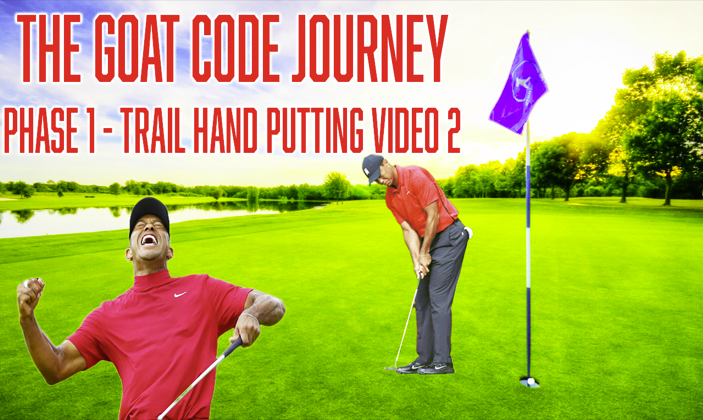
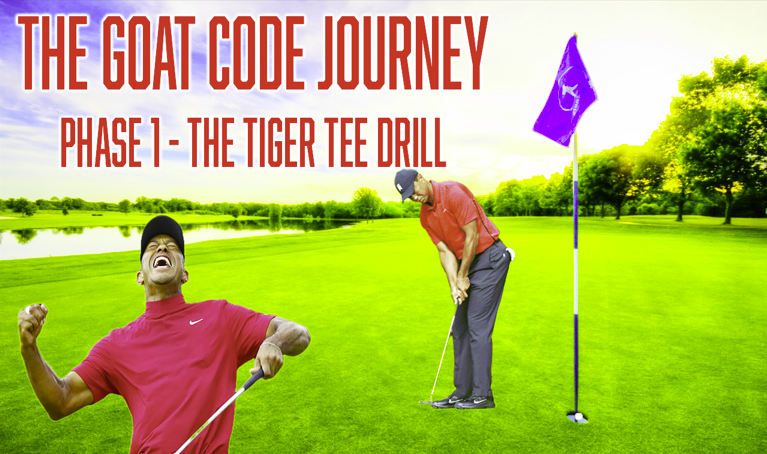
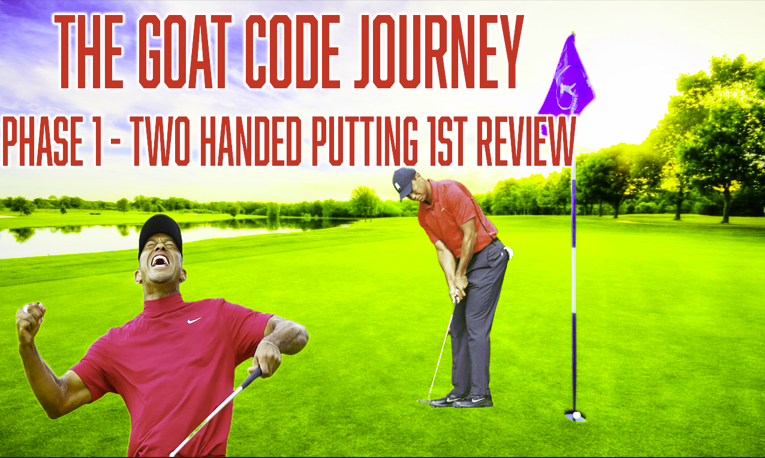


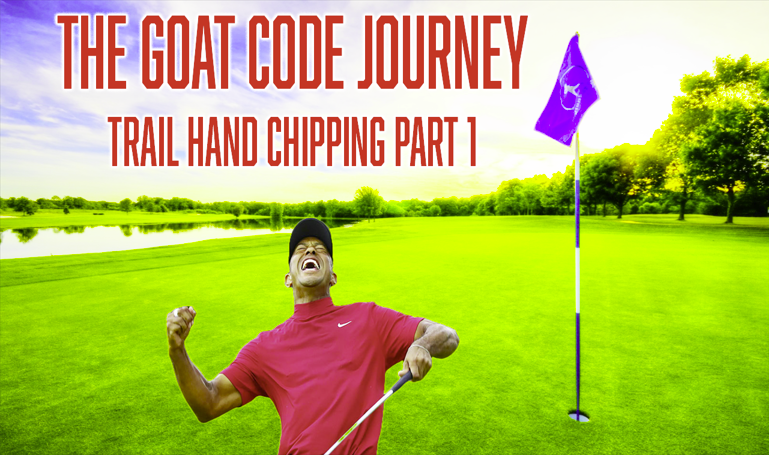
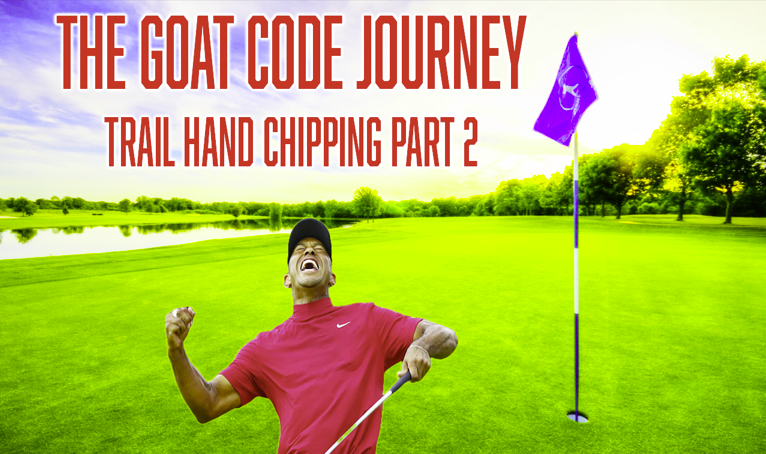

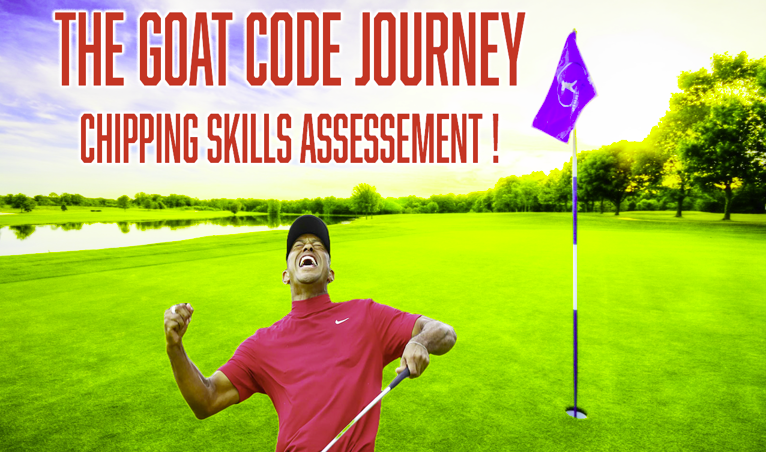

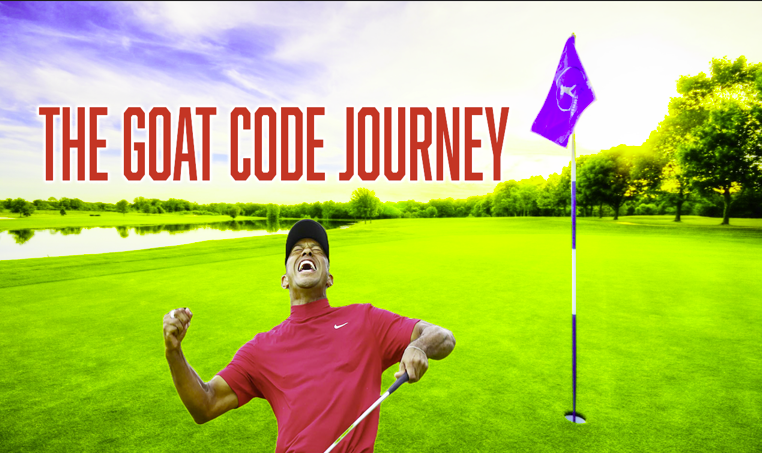
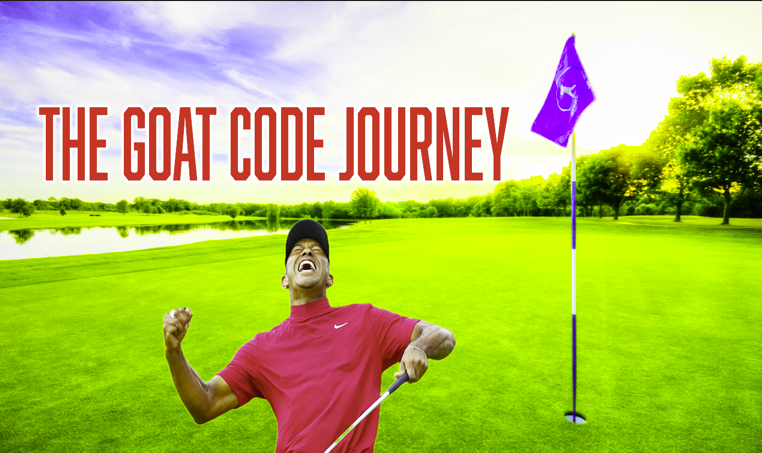


































































































































Asle
Craig (Certified RST Instructor)
rickey
Jack
Craig (Certified RST Instructor)
Kevin
Craig (Certified RST Instructor)
Tom
Craig (Certified RST Instructor)
Ron
Ron
Craig (Certified RST Instructor)
Ron
Craig (Certified RST Instructor)
Ron
Craig (Certified RST Instructor)
Bill
Craig (Certified RST Instructor)
Gregory
Craig (Certified RST Instructor)
Thomas
Craig (Certified RST Instructor)
Donlee
Craig (Certified RST Instructor)
David
Chuck
Shayne
Craig (Certified RST Instructor)
James
Craig (Certified RST Instructor)
Bill
Chuck
Ken
Craig (Certified RST Instructor)
Robert James
Chuck